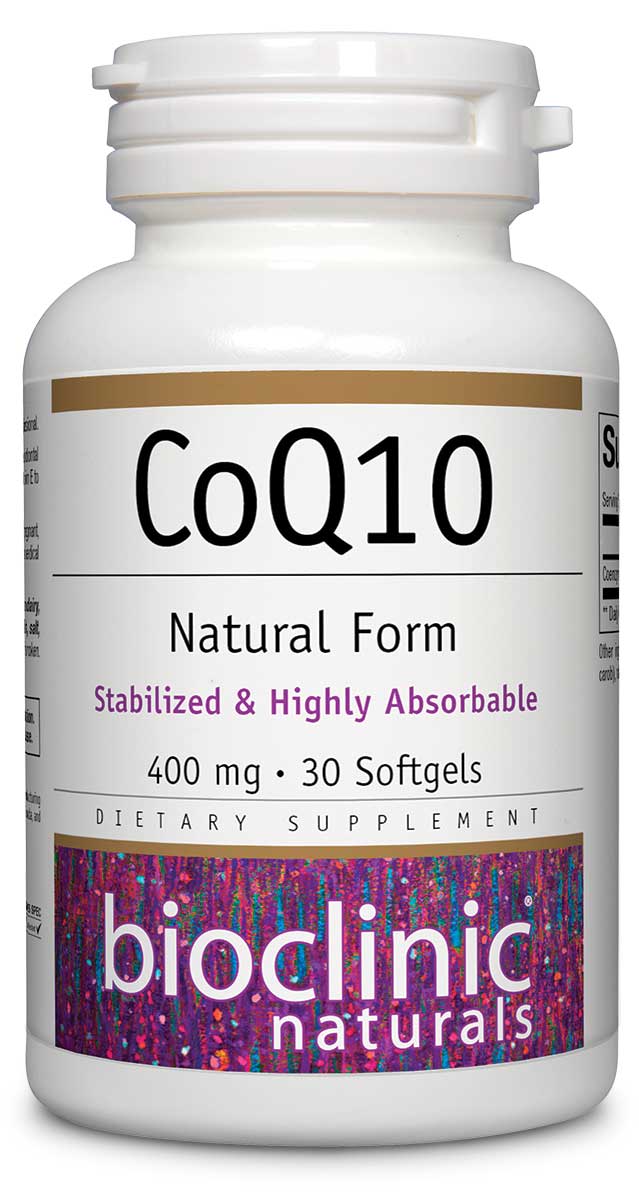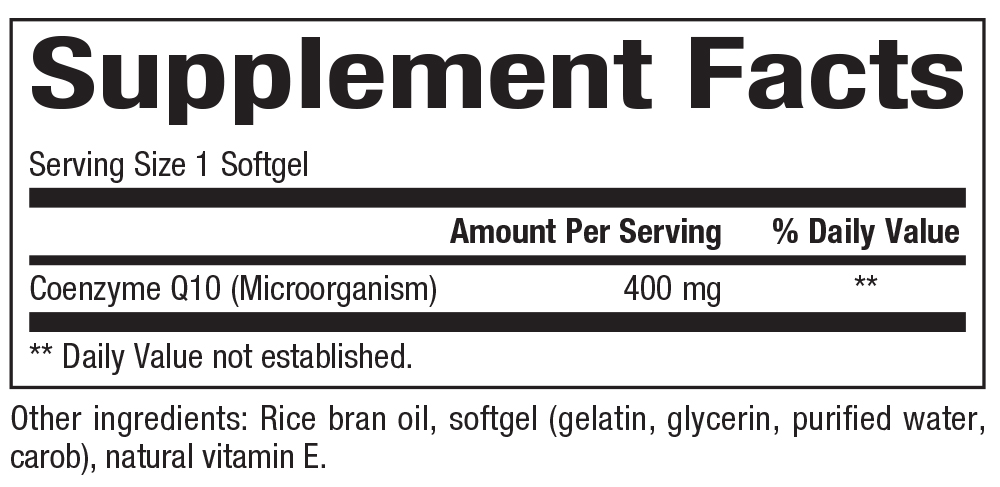
100% Natural CoQ10 · Stabilized & Highly Absorbable · 400 mg
400 mg
30 Softgels ( SKU: 9314U )
Benefits
- Identical to the form produced by the human body for high bioavailability
- Helps support cardiovascular health, helps support mitochondrial health, and has antioxidant activity*
- Higher amount of 400 mg reduces the need of taking multiple pills during the day and keeps pace with research
- Safe from contamination by undesirable residue or microorganisms, including bacteria or yeast
- In a base of natural rice bran oil and vitamin E to ensure a stabilized and highly absorbable form of CoQ10
Feature Summary
CoQ10 has antioxidant activity and helps support mitochondrial health.* It is a coenzyme for numerous reactions involved in cellular respiration, and is required for the efficient formation of adenosine triphosphate (ATP), the cellular currency which drives the majority of enzymatic reactions.1,2 It inhibits peroxidation of cell membrane lipids as well as circulating lipoproteins.3,4
CoQ10 helps maintain cardiovascular health by supporting healthy blood vessels, maintaining normal myocardial function, and supporting healthy blood pressure already within the normal range.*5,6,7,8 CoQ10 may also help maintain normal blood flow, support male reproductive health, and maintain oral and gingival health.*9,10,11
Supplement Facts:

Dosage:
Suggested Usage: 1 softgel per day or as directed by a health care professional.
Allergens:
Contains no artificial colors, preservatives, or sweeteners; no dairy, starch, sugar, wheat, gluten, yeast, soy, corn, egg, fish, shellfish, salt, tree nuts, or GMOs.
Contraindications
No significant contraindications.
Drug Interactions
Although very little evidence supports this interaction, CoQ10 resembles vitamin K structurally, and a potential interaction is possible for those taking the anticoagulant warfarin. Close monitoring of the INR is recommended with CoQ10 introduction in these patients. No other negative drug interactions are known for CoQ10.13
- Potgieter, M., Pretorius, E., Pepper, M.S., et al. (2013). Nutr Rev, 71(3), 180-8.
- Littarru, G.P., Tiano, L. (2010). Nutrition, 26(3), 250-4.
- Yubero-Serrano, E.M., Delgado-Casado, N., Delgado-Lista, J., et al. (2011). Age, 33(4), 579-90.
- Littarru, G.P., Tiano, L. (2007). Mol Biotechnol, 37(1), 31-37.
- Gao, L., Mao, Q., Cao, J., et al. (2012). Atherosclerosis, 221(2), 311-6.
- Rosenfeldt, F.L., Haas, S.J., Krum, H., et al. (2007). J Hum Hypertens, 21(4), 297-306.
- Molyneux, S.L., Florkowski, C.M., George, P.M., et al. (2008). J Am Coll Cardiol, 52(18), 1435-41.
- Lei, L., & Liu, Y. (2017). BMC Cardiovasc Disord, 17(1), 196.
- Littarru, G.P., Tiano, L. (2005). Curr Opin Clin Nutr Metab Care, 8(6), 641-6.
- Safarinejad, M.R., Safarinejad, S., Shafiei, N., et al. (2012). J Urol, 188(2), 526-31.
- Pringshelm, T., Davenport, W., Mackie, G., et al. (2012). Can J Neurol Sci, 39(2 Suppl 2), S1-59.
- Ernster, L., Dallner, G. (1995). Biochim Biophys Acta, 1271(1), 195-204.
- Bonakdar, R.A., Guarneri, E. (2005). Am Fam Physician, 72(6), 1065-70.
